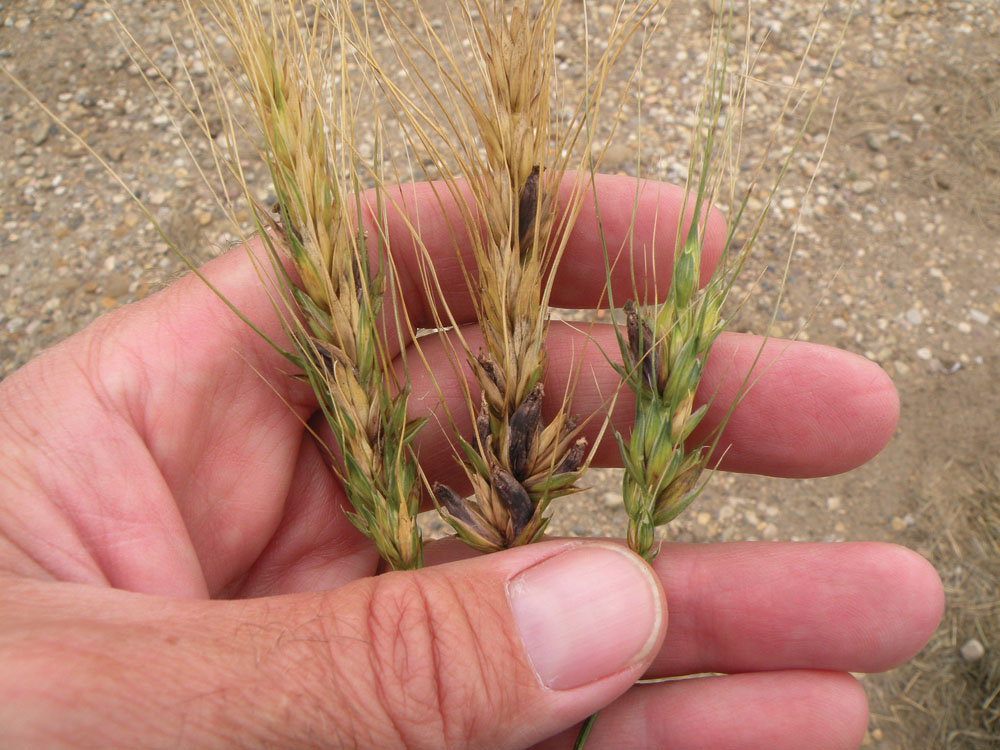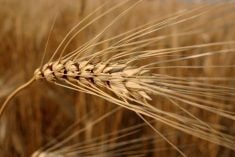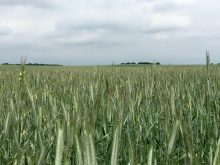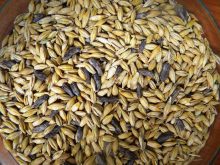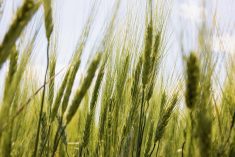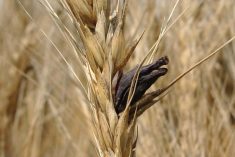Q: Can the application of copper reduce ergot levels in wheat?
A: Ergot is a worldwide disease that affects cereal crops such as wheat, barley, triticale, rye, and oats. Ergot is promoted in years with cool, damp weather conditions in late spring and early summer. When a crop is under stress, the flowering period is prolonged and natural pollination is delayed. Ascospores attach to the cereal florets by wind dispersion. The spore then germinates and penetrates the ovary to eventually produce a black horn- shaped sclerotia in place of the developed grain kernel. Insects and rain splash can also disperse this pathogen.
Read Also

Claas brings 1000 Series SP forage harvesters to Canada
In mid-August, Claas unveiled its new line of Jaguar forage harvesters at an event in Visalia, California, deep in the heart of that state’s dairy region.
Infected grain is often downgraded due to the toxic nature and then fed to animals by mixing with other grains or created into a pelleted form. In recent years, several feed mills in Western Canada have sold high-ergot-level feed to producers and it had a devastating effect on animal herds (long- term side-effects and death). Sometimes ergot can be reduced with simple management techniques such as crop rotation, variety change, certified seed, deep plowing of soil reserved sclerotia bodies, good fertility and weed control.
Studies have shown that a copper deficiency can prolong the flowering period, which promotes a pathogen like ergot to enter the ovary. Copper-deficient soils occur in pockets throughout Western Canada, often observed in black soil zones in coarse-textured soils (sandy/loamy sands) or organic/peat soils. Copper is immobile in the soil and its availability decreases with higher pHs (7.5-9). A grower must have a copper deficiency to show results from a copper application. Wheat is a highly sensitive crop in copper-deficient soils. A copper application can reduce anthesis length in wheat thus reducing ergot — if there are existing ascospores at the time of anthesis.
Broadcast, foliar or seed-placed applications are three common practices to offset deficiencies. Broadcasting copper sulphate then working it into the soil has resulted in a larger, immediate return on investment compared to seed-placed or granular related products. Soil and foliage testing can help confirm copper-deficient soils.
Jade Delaurier, CCA, AAg, is a manager of agronomic services with Nutrien Ag Solutions in eastern Saskatchewan.

